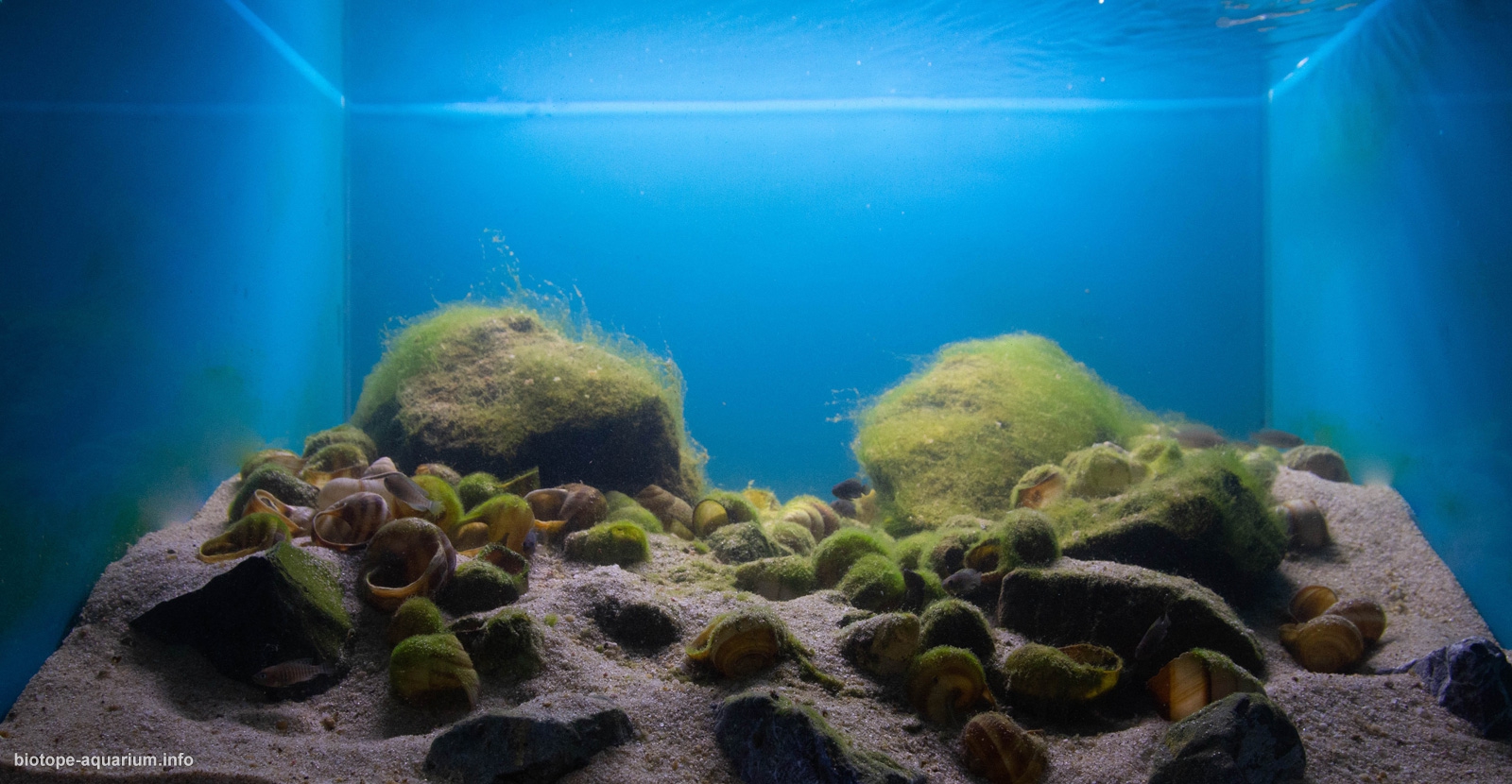Lake Tanganyika at Chimba biotope
119th place in Biotope Aquarium Design Contest 2018
![]() Turkey. Uğur Ruşen Doğan
Turkey. Uğur Ruşen Doğan

Volume: 140 L
Dimensions: 60X50X40 cm
List of fishes: Neolamprologus multifasciatus, Altolamprologus compressiceps
List of plants: N/A
Description of decorations: Shells.
Description of equipment: External filter Haqos expro 500. Fluorescent lamps T5 2X24W Aquastar.
Water parameters: Temperature is 28-29°C, pH is 8.2.
INFORMATION ABOUT BIOTOPE
Description of the area surrounding the biotope: Although Zambia can only claim 7% of the lake’s surface area, Nsumbu National Park encompasses some 100 kilometres of the lake’s most pristine shoreline. Every conceivable shoreline is represented within Zambian waters. The national park offers a haven to both big game, as well as an important protected area for fish and other aquatic life. On the eastern side of the park some of the most dramatic landscapes are found with escarpments plunging 400 metres into the lake. During the rains many of the valleys cascade with running water forming spectacular and remote waterfalls, many without even names.
Description of the underwater landscape of the biotope: Large empty shells, mainly of the snail neothauma tanganyicense, are found on sandy or muddy bottoms but rarely among the rocks. Quite frequently, in particular in regions deeper than 10 metres, lagre accumulations of empty and partly crushed shells provide a calciferous “ rocky “ habitat for a group of small,” cave brooding “ cichlids. Three different shell-biotopes can be distinguished. The large accumulations unerstand ably offer the greatest living space but usually just a few species dominate the communities in such habitats. In shell beds of this type, which can be more than several metres thick and several kilometres long, most top-layer shells are “ glued “ together by calciferous deposists which can completely surround the shell, closing it off , and render it useless as a cichlid home. The second type of shell biotope consists of loosely arranged shells grouped together in shallow habitats and usually found hear rocks. I have found such gropus mostly in the upper 15 metres. It is possible that all shell groups of this type consists of single empty shells lying scattered on the sandy of muddy lake floor. Such a patterns is rather common on many sand shores, with shells found in shallow as well as in very deep water.
Description of the parameters of the habitat: N/A
List of fishes and invertebrates occurring in the nature biotope: N/A
List of plants found in the nature biotope: N/A
Sources of information: N/A
